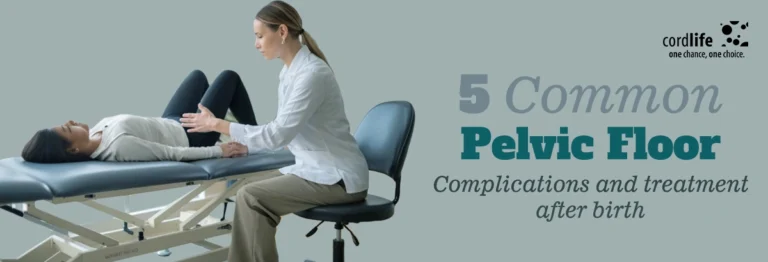Congratulations new mom! You gave birth to a sweet little bundle of joy after nine months. Finally, you’ve made it through all the stages of pregnancy, labor and delivery. However, the pelvis still hurts. Is not; Yes! It’s natural.
Pelvic changes during pregnancy
The pelvis includes the hip bones, the tailbone and a triangular bone below the spine. During pregnancy, due to hormonal changes, the pelvis tilts, the pelvic girdle hurts, and the drop of the baby can cause you pelvic pain.
Postpartum pelvic floor dysfunction and treatment options
The pelvic floor may not feel as strong after your baby is born. Pelvic pain may be common, but every new mom can experience other pelvic complications that may include the following:
Urinary incontinence after childbirth
The sphincter muscle located below the bladder helps control the flow of urine, which can be affected during and after pregnancy due to hormonal and physical changes. As the baby grows inside you during pregnancy, the uterus expands and the growing baby puts a lot of pressure on the bladder. Even if you sneeze, cough, laugh or exercise, you may be leaking without knowing it. Along with this, your age and weight are some of the big factors behind incontinence of pregnancy. After childbirth also the problem of incontinence continues. Childbirth leaves the pelvic floor muscles weak. This problem can cause further overactive bladder.
Treatment for urinary incontinence
Try doing at least 10 Kegels in the morning, afternoon and evening. Well! If bladder problems persist 6 weeks after your baby is born, see your healthcare professional right away.
Pelvic organ prolapse
Pelvic organ prolapse (POP) occurs when more than one muscle in the pelvic organs – bowel, bladder, uterus or vagina becomes weak or damaged and descends into the vagina. Prolapse may not be a life-threatening condition, but it can cause you discomfort.
Treatment for Pelvic Organ Prolapse
The good news is that pelvic organ prolapse can improve over time. Bring it to your doctor the moment it starts to show symptoms of pressure in the pelvic area, leakage of urine, lower back pain or constipation. Prolapse treatment is based on its severity. Surgery and medication may be an option. Also, including postpartum activities can be a way to deal with it.
Pelvic girdle pain (PGP)
As the new mom deals with physical and emotional changes in her body and mind, pelvic girdle pain is something she may have to deal with. About 1 in 4 women experience pelvic pain after 3 months of giving birth due to perineal or vaginal tears, pressure on the pubic bone, muscle weakness and pelvic organ prolapse.
Treatment for pelvic girdle pain (PGP)
Practice deep breathing, meditation, yoga and Kegels. Alternatively, you can use tampon-like intravaginal devices to make you feel relieved of stress and tension and to support the muscles inside.
Perineal Pain
Perineal pain after childbirth is a common problem that can result from natural tears or dysfunction of the pelvic floor. According to studies42% of new moms may experience this condition within the first 2 weeks, but the level of discomfort and how long it lasts can vary greatly from one new mom to another.
Treatment for Perineal Pain
Apply ice to the area for 10 or 20 minutes. Find relief through a sitz bath. Spray warm water on the area. Wear loose clothing. Include more fiber in your regular postpartum diet.
Broken tail
The tail or coccyx is located at the bottom of the birth canal. As the baby’s head directly meets the tail from the birth canal, it can sometimes cause dislocation, fracture or bruising. In this condition, you may also experience chronic pain and a significant problem with movement.
Cleft palate treatment
Physiotherapy can certainly be effective in this condition, with it, certain pelvic floor exercises – lying on your stomach, side or sitting in an adequate position can help you deal with the pain. Breathing exercises can also help relieve broken tailbone pain.
Six months after your baby is born, your muscles and tissues are remodeling. As a result of the hormonal changes during the postpartum period, the muscles and tissues of the pelvic floor undergo many changes. In addition to the treatment options mentioned above for various species postpartum complicationsyou can go for a postpartum massage and see a pelvic floor physiotherapist.
